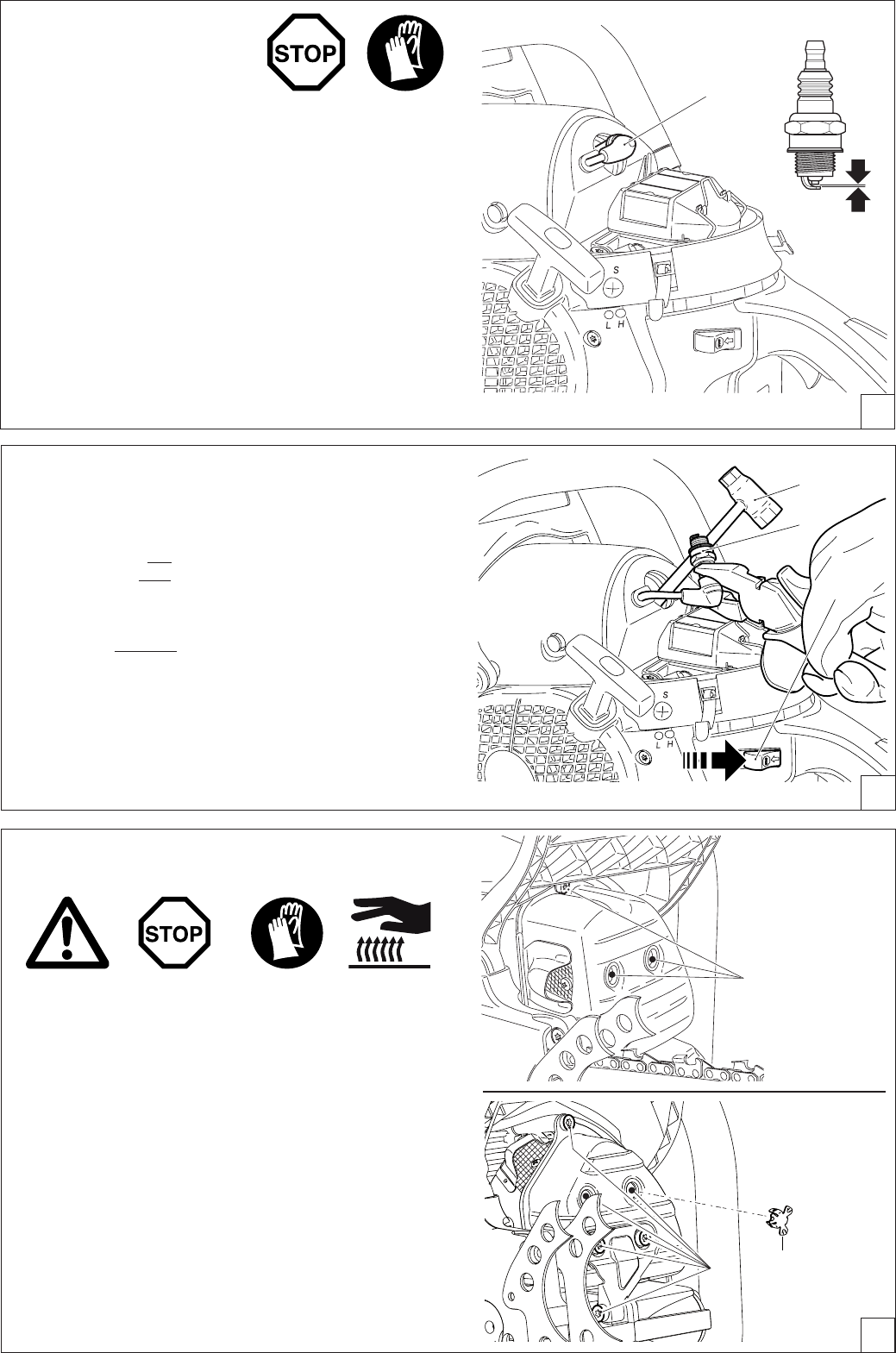
33
Replacing the spark plug
CAUTION:
Do not touch the spark plug or plug cap if the engine is
running (high voltage).
Switch off the engine before starting any maintenance work.
A hot engine can cause burns. Wear protective gloves!
The spark plug must be replaced in case of damage to the
insulator, electrode erosion (burn) or if the electrodes are very
dirty or oily.
Remove the lter cover (see "Cleaning the air lter").
Pull the plug cap (6) off the spark plug. Use only the combination
wrench supplied with the saw to remove the spark plug.
Electrode gap
The electrode gap must be .020" (0.5 mm).
CAUTION: Use only the following spark plugs: NGK BPMR 7A
or BOSCH WSR 6F.
Checking the ignition spark
Stick the combination tool (7) between the hood and cylinder
exactly as shown.
IMPORTANT! Do not stick the tool in the spark plug hole.
It should touch only the cylinder (otherwise the engine will
be damaged!).
With the spark-plug cap rmly attached to the unscrewed spark
plug (8), use insulated pliers to hold the plug against the tool
(away from the spark-plug hole!).
Switch the I/STOP ignition switch (9) as shown by the arrow.
Pull the starter cable hard.
If the function is correct, an ignition spark must be visible near
the electrodes.
7
8
9
6
.020”
(0,5 mm)
B
C
Checkingthemuferscrews
Careful!
Donottightenthemuferscrewswhentheengineishot!
Check the mufer screws (10) for tightness. If they are loose,
hand-tighten them. Important - do not overtighten!
On model with catalytic converter, rst remove the two plugs
(11) using a small screwdriver.
Put the plugs back in after checking the screws!
Information on the catalytic converter: The catalytic converter
reduces the pollutant content of the exhaust.
D
10
10
11
Model with
catalytic
converter
Model without
catalytic
converter
10
10
11


















